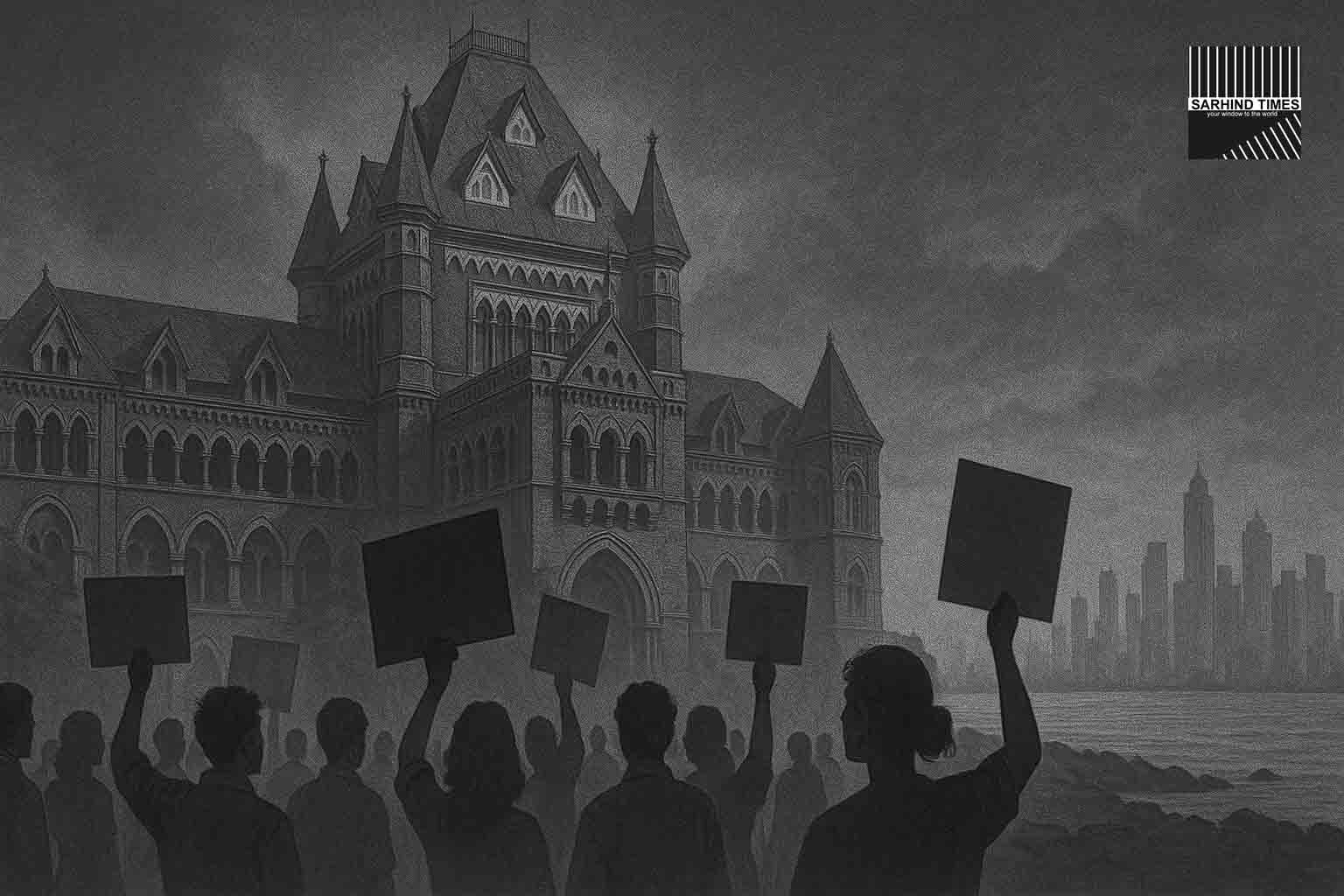By Sarhind Times Legal & Civic Affairs Desk
Mumbai, October 3:
In a sharp rebuke to what it termed a “fraud on the Constitution,” the Bombay High Court has castigated a controversial proposal to hand over nearly 33 acres of prime, sea-facing government land in South Mumbai to a private slum redevelopment project.
The land in question, situated in Cuffe Parade and Colaba, is some of the most valuable real estate in the country, with a market value that could run into several thousand crores. The court, in its stern interim order, observed that while the rehabilitation of slum dwellers is important, “the rights of a section cannot override the larger public’s right to open spaces in a city gasping for breathing room.”
The bench of Justices Girish Kulkarni and Aarti Sathe directed the Defence Ministry, the Maharashtra government, and the Slum Rehabilitation Authority (SRA) to file affidavits explaining how such a handover was contemplated and whether statutory approvals and due process were followed. The matter will next be heard on October 15.
⚖️ The Court’s Observations
During the hearing, the judges noted that:
- Public interest must take precedence over private developer interests.
- The transfer of 33 acres of sea-facing land under the guise of slum redevelopment “defies logic.”
- The city’s chronic shortage of parks and public grounds cannot be ignored.
- Allocating scarce coastal land to developers could set a dangerous precedent.
Justice Kulkarni remarked:
“When Mumbai already faces severe scarcity of open public spaces, how can vast government plots be handed over to private entities? This could amount to gifting national wealth in the name of rehabilitation.”
🏙️ Mumbai’s land paradox: scarcity in abundance
Mumbai’s urban planning paradox is stark. The city is both the financial capital of India and one of the most land-starved metropolises globally.
- According to a municipal study, Mumbai offers less than 1.2 sq. metres of open space per person, far below WHO’s recommended 9 sq. metres per person.
- Prime coastal land parcels like those in Colaba–Cuffe Parade are among the last remaining open tracts that could serve as parks, promenades, or public institutions.
- The proposal under scrutiny seeks to classify this land as “slum-eligible,” despite doubts about actual habitation patterns.
🏗️ Slum Rehabilitation Authority (SRA): Boon or loophole?
The SRA model, introduced in the 1990s, was intended to rehabilitate slum dwellers by incentivising private developers with lucrative land rights. Over the decades, however, critics argue it has become a vehicle for:
- Land grabs under the guise of “slum redevelopment.”
- Inflated claims of slum occupancy to secure prime parcels.
- Collusion between developers and officials at the cost of transparency.
Urban policy researcher Arundhati Deshpande notes:
“While SRA has produced some success stories, it has equally been exploited. Large tracts of high-value land have slipped into private hands, often with minimal accountability.”
📜 Legal backdrop
The HC’s strong words draw from constitutional principles of equitable access to natural resources. Courts have repeatedly held that state-owned land is public trust property and cannot be handed over arbitrarily.
Key precedents include:
- Olga Tellis case (1985): Recognised right to livelihood of pavement dwellers but balanced it with planned urban development.
- Goa Foundation (2014): Reiterated the doctrine of “public trust” in managing natural resources.
The Bombay HC’s interim order builds on this jurisprudence, warning against the commodification of urban commons.
👥 Stakeholders Respond
- Government officials: Maintained that affidavits will clarify the legal standing and that no final decision has yet been taken.
- Developers’ representatives: Argued that rehabilitation is a constitutional duty and projects like these “unlock” valuable urban land for both poor and rich.
- Citizen groups: Outraged at what they call a “backdoor land grab.”
- Environmentalists: Highlighted how coastal land should remain as green buffers against climate change and rising sea levels.
🌍 Comparative context
Cities worldwide treat prime coastal land as community assets:
- New York: Hudson River Park spans 550 acres, reclaimed from commercial piers.
- London: The Thames riverfront integrates promenades and cultural spaces.
- Singapore: Marina Bay is a model of balancing real estate with green space.
Mumbai, in contrast, has repeatedly lost open land to private interests, often without transparent bidding.
📉 The broader implications
If such a handover were permitted:
- It could embolden other developers to claim strategic land parcels as “slum redevelopment sites.”
- The already meagre open-space ratio of Mumbai could decline further.
- Trust in SRA as a fair rehabilitation model would erode completely.
📰 Conclusion
The Bombay High Court’s intervention has, at least for now, put the brakes on what could have been one of the largest transfers of public land into private hands in recent memory. The case underlines a central tension of urban India: how to balance the rights of the poor, the interests of developers, and the larger public good of preserving open spaces.
As Mumbai braces for the October 15 hearing, all eyes are on whether this interim rebuke will evolve into a landmark judgment on urban commons, slum rehabilitation, and the constitutional duty of the state as custodian of public land.
#BombayHC #Mumbai #UrbanPolicy #SRA #PublicInterest






















+ There are no comments
Add yours